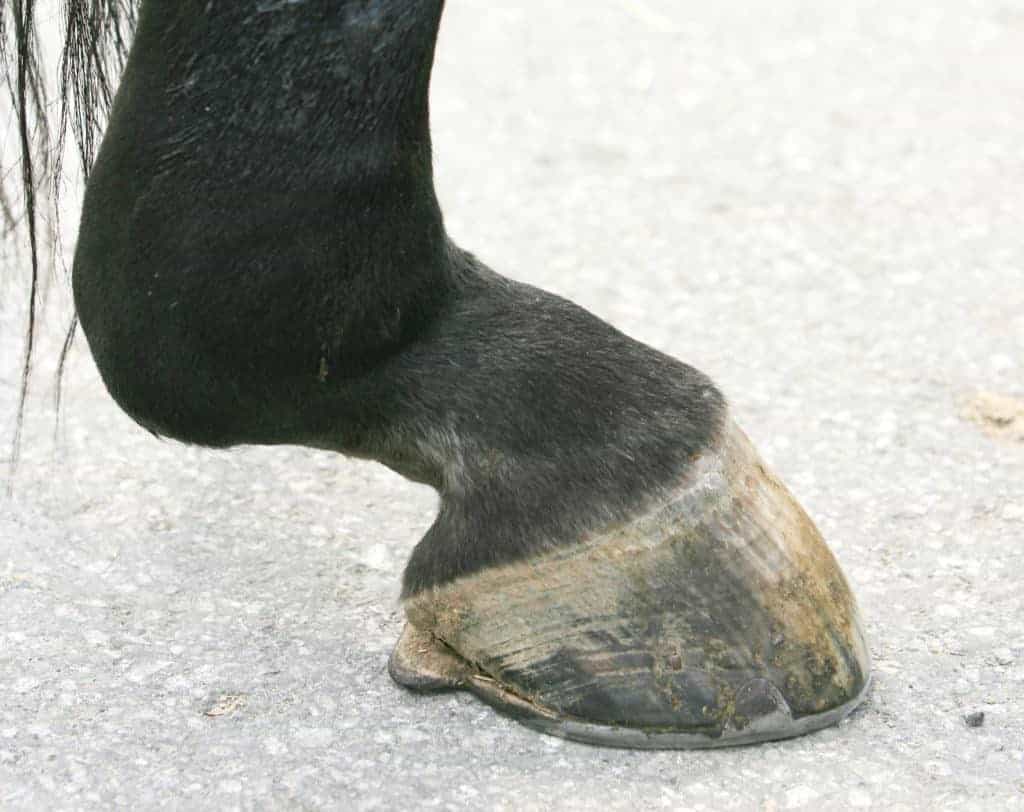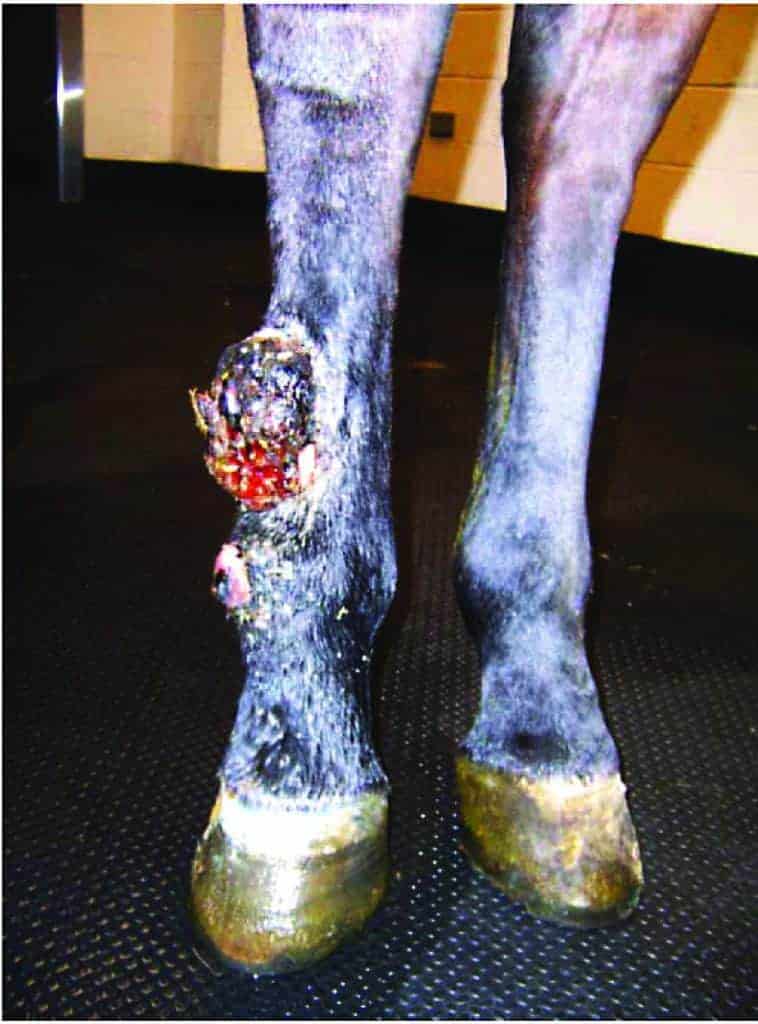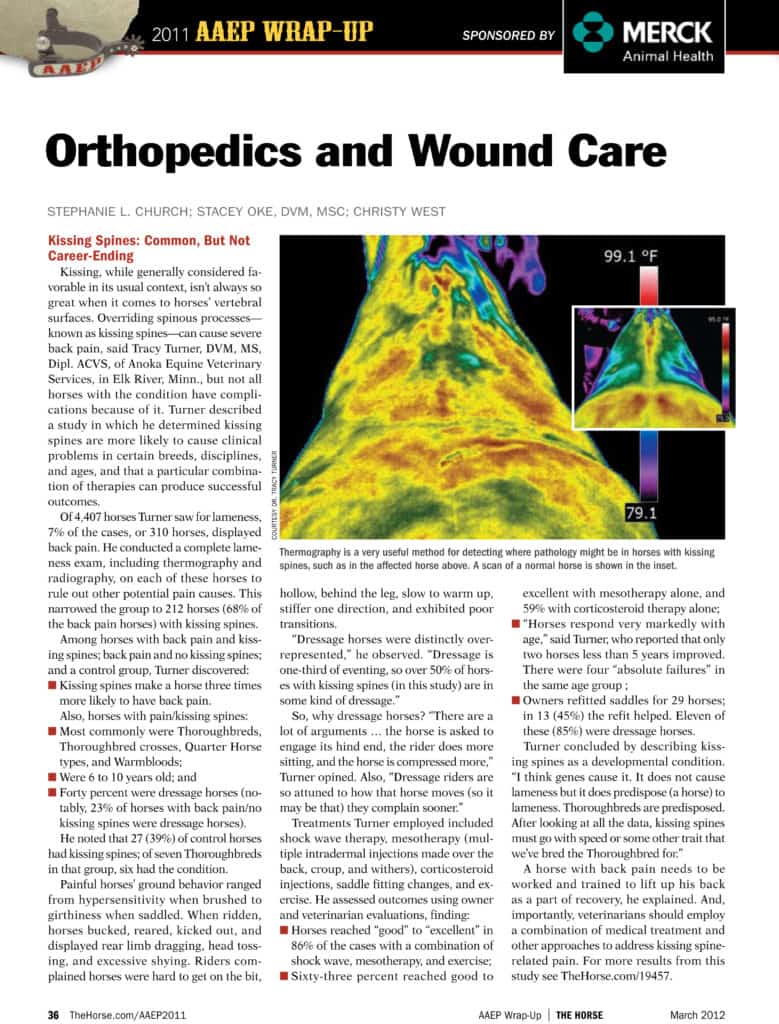
Equine Gait Abnormalities as a Diagnostic Tool
Some disorders produce gait abnormalities and lamenesses that aid in a quick and accurate diagnosis.

Some disorders produce gait abnormalities and lamenesses that aid in a quick and accurate diagnosis.

Even the tiniest leg laceration can have dire consequences for nearby tendons if left untreated.
Veterinarians diagnosed 5-year-old mare with lateral middle distal sesamoidean ligament desmitis on April 23.

Hyperbaric oxygen therapy might benefit horses with certain injuries or illnesses; more research is needed.

Delayed wound closure involves suturing wounds four to five days after injury.

Equine wounds need to be managed carefully to prevent the development of exuberant granulation tissue.

Advances in equine orthopedics and wound care such as managing kissing spines, cast complications, evaluating the horse’s movement, and granulation tissue management were discussed during the 2011 AAEP Convention in San Antonio, Texas.
Manuka honey can be used to promote healing of wounds without the need for a bandage, one researcher said.
On March 6, New Bolton Center will present “Suspensory Ligament Diseases in the Performance Horse.”
Mixed study results indicate more research is needed to determine dosing frequency and therapeutic window.

Using computational modeling, researchers can examine “what if” scenarios related to equine injuries.

Nonsurgical exogenous crosslinking therapy (NEXT) is undergoing efficacy testing in healing equine tendons

A stem cell-PRP combination could be more effective than either therapy alone for treating soft tissue lesions
When a horse needs surgery, what’s his prognosis for a full recovery? What problems can occur during recovery?

Find out how stem cells are currently being used to treat orthopedic injuries in horses and how the cells
The wealth of scientific technology makes it difficult to keep track of treatment options for injured horses.
Stay on top of the most recent Horse Health news with
"*" indicates required fields